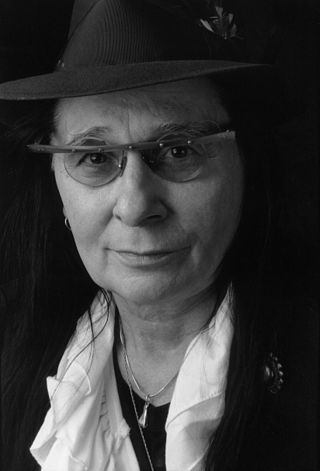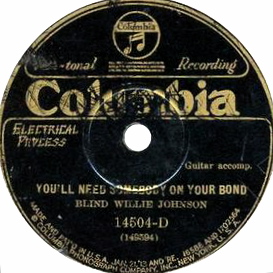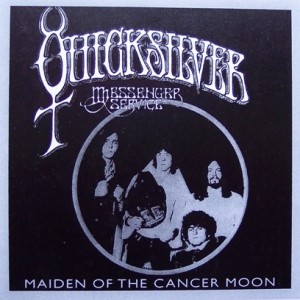
The Charlatans were an American folk rock and psychedelic rock band that played a role in the development of the San Francisco Haight-Ashbury music scene during the 1960s. They are often cited by critics as being the first group to play in the style that became known as the San Francisco Sound.

Buffy Sainte-Marie, is an Indigenous Canadian-American singer-songwriter, musician, composer, visual artist, educator, pacifist, and social activist. While working in these areas, her work has focused on issues facing Indigenous peoples of the Americas. Her singing and writing repertoire also includes subjects of love, war, religion, and mysticism. She has won recognition, awards and honours for her music as well as her work in education and social activism. Among her most popular songs are "Universal Soldier", "Cod'ine", "Until It's Time for You to Go", "Take My Hand for a While", "Now That the Buffalo's Gone", and her versions of Mickey Newbury's "Mister Can't You See" and Joni Mitchell's "The Circle Game". Her songs have been recorded by many artists including Donovan, Joe Cocker, Jennifer Warnes, Janis Joplin, Elvis Presley, and Glen Campbell.

The Beau Brummels was an American rock band. Formed in San Francisco in 1964, the band's original lineup included Sal Valentino, Ron Elliott, Ron Meagher, Declan Mulligan, and John Petersen (drums). They were discovered by local disc jockeys who were looking to sign acts to their new label, Autumn Records, where Sylvester Stewart—later known as Sly Stone—produced the group's early recording sessions. Initially, the band's musical style blended beat music and folk music and typically drew comparisons to the Beatles, while their later work incorporated other music genres such as psychedelic rock and country rock.
Psychedelic folk is a loosely defined form of psychedelia that originated in the 1960s. It retains the largely acoustic instrumentation of folk, but adds musical elements common to psychedelic music.

Bernard Alfred "Jack" Nitzsche was an American musician, arranger, songwriter, composer, and record producer. He first came to prominence in the early 1960s as the right-hand-man of producer Phil Spector, and went on to work with the Rolling Stones and Neil Young, among others. He also worked extensively in film scores, notably for the films Performance, The Exorcist and One Flew Over the Cuckoo's Nest. In 1983, he won the Academy Award for Best Original Song for co-writing "Up Where We Belong" with Buffy Sainte-Marie.

7-Tease is an album by the British singer-songwriter Donovan. It was released in the US in November 1974 and in the UK in January 1975.
"Universal Soldier" is a song written and composed by Canadian singer-songwriter Buffy Sainte-Marie. The first released recording was a single by The Highwaymen, released in September 1963. The song was also released on Sainte-Marie's debut album It's My Way!, released in April 1964. "Universal Soldier" was not an immediate popular hit at the time of its release, but it did garner attention within the contemporary folk music community. It became a hit a year later when Donovan covered it, as did Glen Campbell. Sainte-Marie said of the song: "I wrote 'Universal Soldier' in the basement of The Purple Onion coffee house in Toronto in the early sixties. It's about individual responsibility for war and how the old feudal thinking kills us all." The idea was based on that politicians, with power over the military, in democratic states are elected by the people.

"You'll Need Somebody on Your Bond" is a gospel song that is attributed to both tradition and to gospel blues musician Blind Willie Johnson. Johnson first recorded the song in December 1930, although Delta blues musician Charley Patton recorded a similar "You're Gonna Need Somebody When You Die" in October 1929. Over the years, several other musicians have recorded renditions of the song.

Try for the Sun: The Journey of Donovan is the second CD boxed set from Scottish singer-songwriter Donovan. It was released on 13 September 2005.
"The Partisan" is an anti-fascist anthem about the French Resistance in World War II. The song was composed in 1943 by Russian-born Anna Marly (1917–2006), with lyrics by French Resistance leader Emmanuel d'Astier de La Vigerie (1900–1969), and originally titled "La Complainte du partisan". Marly performed it and other songs on the BBC's French service, through which she and her songs were an inspiration to the Resistance. A number of French artists have recorded and released versions of the song since, but it is better recognised globally in its significantly, both musically and in the meaning of its lyrics, different English adaptation by Hy Zaret (1907–2007), best known as the lyricist of "Unchained Melody".

It's My Way! is the first album by folk musician and songwriter Buffy Sainte-Marie. It was released in April 1964 by Vanguard Records. It was later released in Britain in the spring of 1965 by Fontana Records. Though the album did not chart, it proved influential in the folk community. It is most famous for two widely covered folk standards, "Universal Soldier" and "Cod'ine", as well as "Now That the Buffalo's Gone", a lament about the continued confiscation of Indian lands, as evidenced by the building of the Kinzua Dam in about 1964. The cover features a mouthbow, which was to be a trademark of her sound on her first three albums.
Michael Ray Wilhelm was an American guitarist, singer and songwriter, best known as a founding member of the influential Bay Area band the Charlatans, who have been widely credited as starting the Haight-Ashbury psychedelic scene during the 1960s. He later played with the bands Loose Gravel and the Flamin' Groovies.

"Who Do You Love?" is a song written by American rock and roll pioneer Bo Diddley. Recorded in 1956, it is one of his most popular and enduring works. The song represents one of Bo Diddley's strongest lyrical efforts and uses a combination of hoodoo-type imagery and boasting. It is an upbeat rocker, but the original did not use the signature Bo Diddley beat rhythm.

Maiden of the Cancer Moon is a live album by American psychedelic rock band Quicksilver Messenger Service.

If I Were a Carpenter is an album by American singer Bobby Darin, released in 1966. It was a significant change in direction for Darin considering his previous album was a collection of show tunes.

Changing Woman is an album by Buffy Sainte-Marie, released in 1975 via MCA Records. It was her second, and last, album for the label.

The Amazing Charlatans is a compilation album by the American psychedelic rock band the Charlatans that was released in 1996 by Big Beat Records. The album is a collection of demos, tracks that appeared on singles, and previously unreleased sessions that the band recorded between August 1965 and early 1968, at a variety of different San Francisco studios.
Codeine is an opiate substance.

This Is Janis Joplin 1965 is an album by Janis Joplin released by James Gurley in 1995.
"Now That the Buffalo's Gone" is the first song from the 1964 album It's My Way! by Canadian First Nations singer-songwriter Buffy Sainte-Marie. The song's title refers to the near-extinction of the American bison and serves as a metaphor for the cultural genocide inflicted by Europeans. A classic folk protest song, "Now That the Buffalo's Gone" has a simple arrangement with guitar and vocals by Sainte-Marie and bass played by Art Davis. The song is a lament that addresses the continuous confiscation of Indian lands. In the song, Sainte-Marie contrasts the treatment of post-war Germany, whose people were allowed to keep their land and their dignity, to that of North American Indians.














